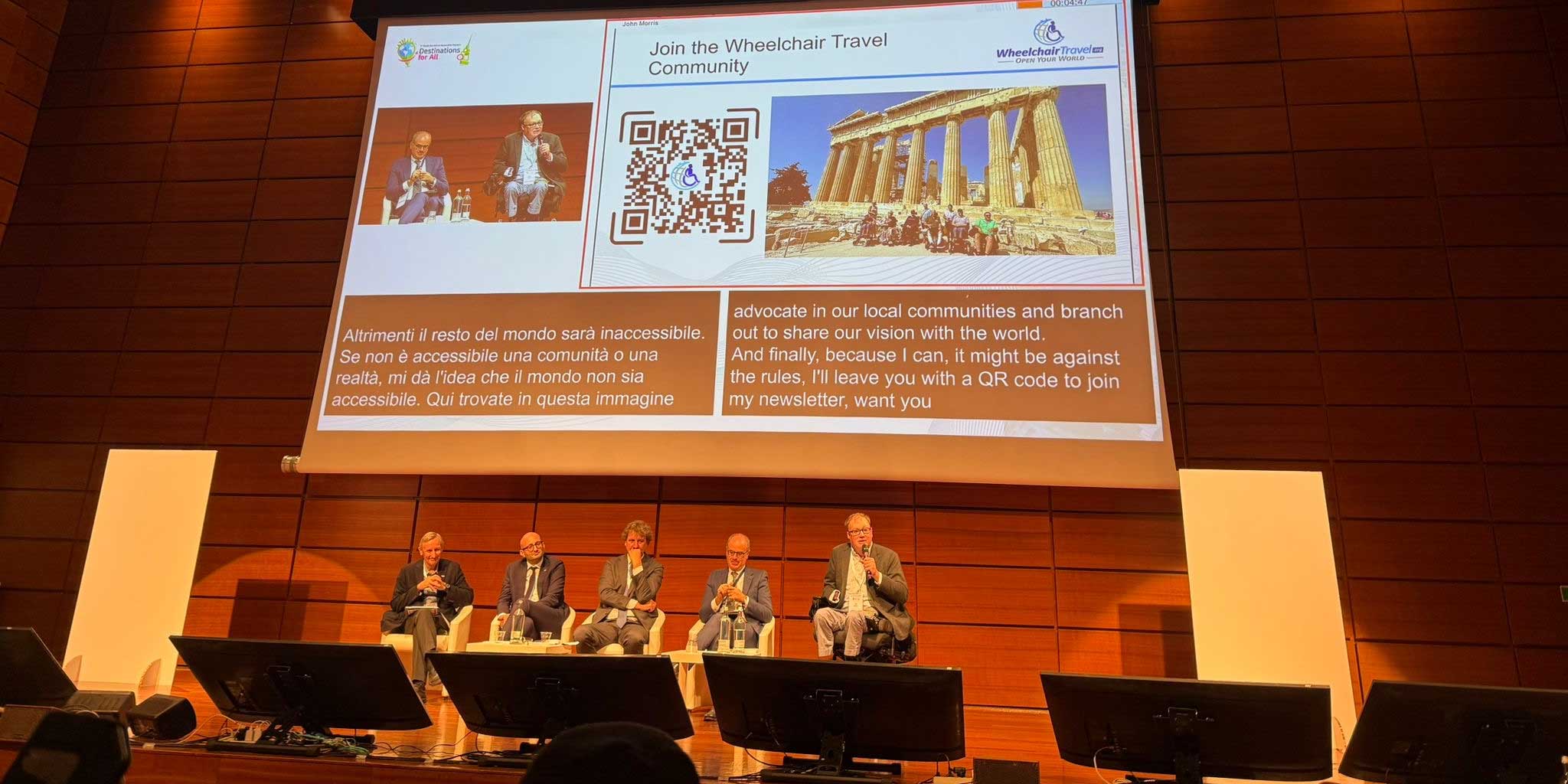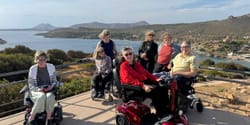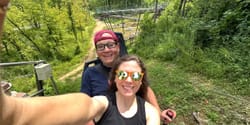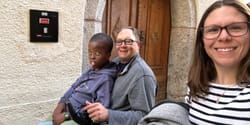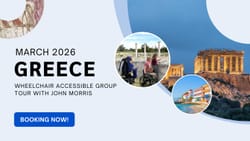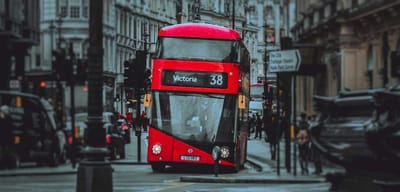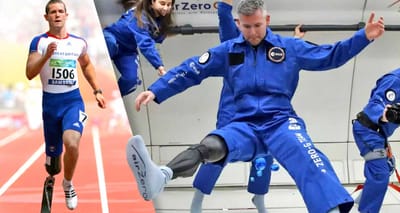Destinations for All is the world's largest gathering of accessible travel advocates and professionals. The 2025 event, the Third World Summit on Accessible Tourism (WSAT), was held in Turin, Italy and kicked-off with an opening reception at the world-class Museo Egizio (Egyptian Museum), the largest such museum outside of Egypt.
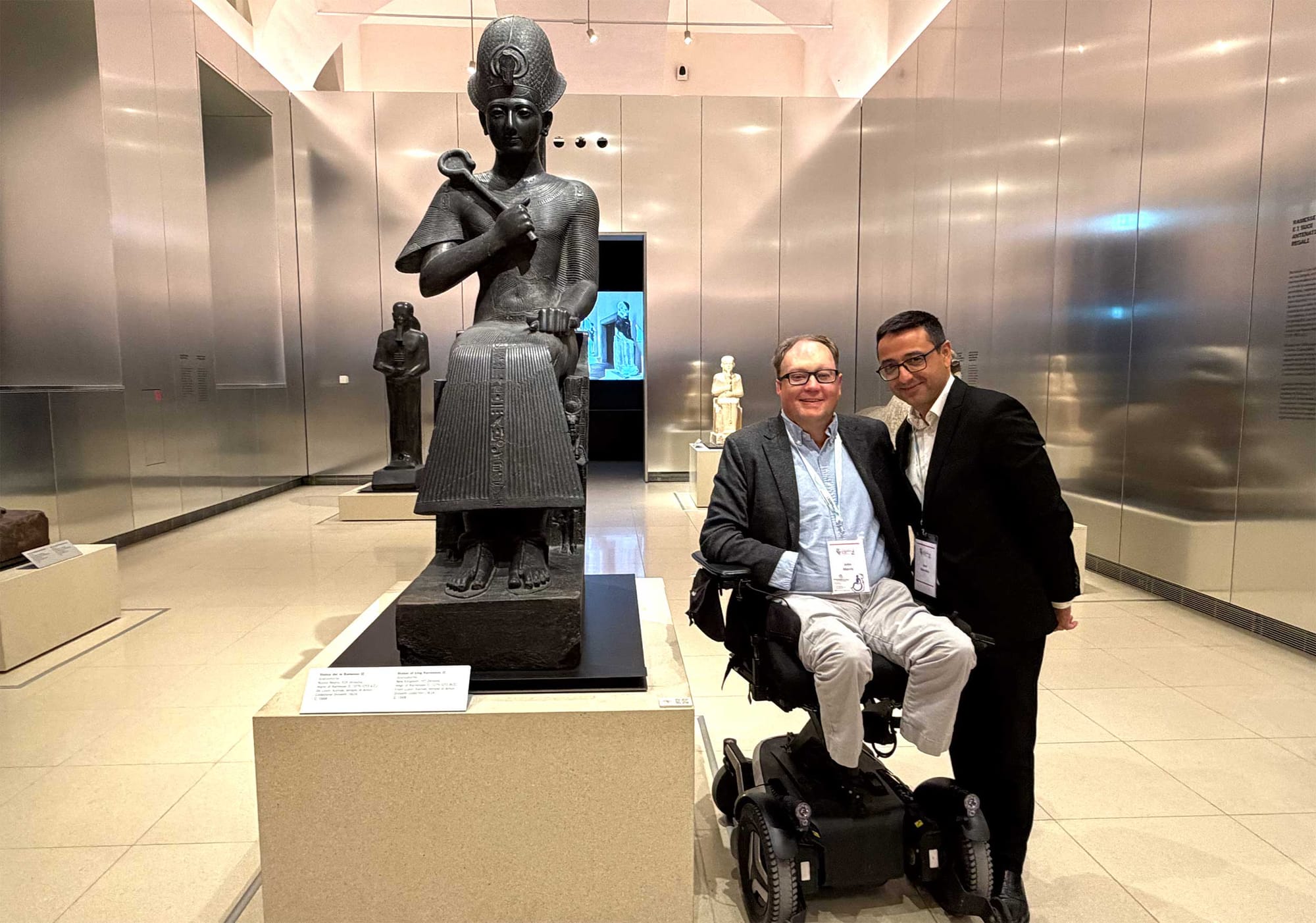
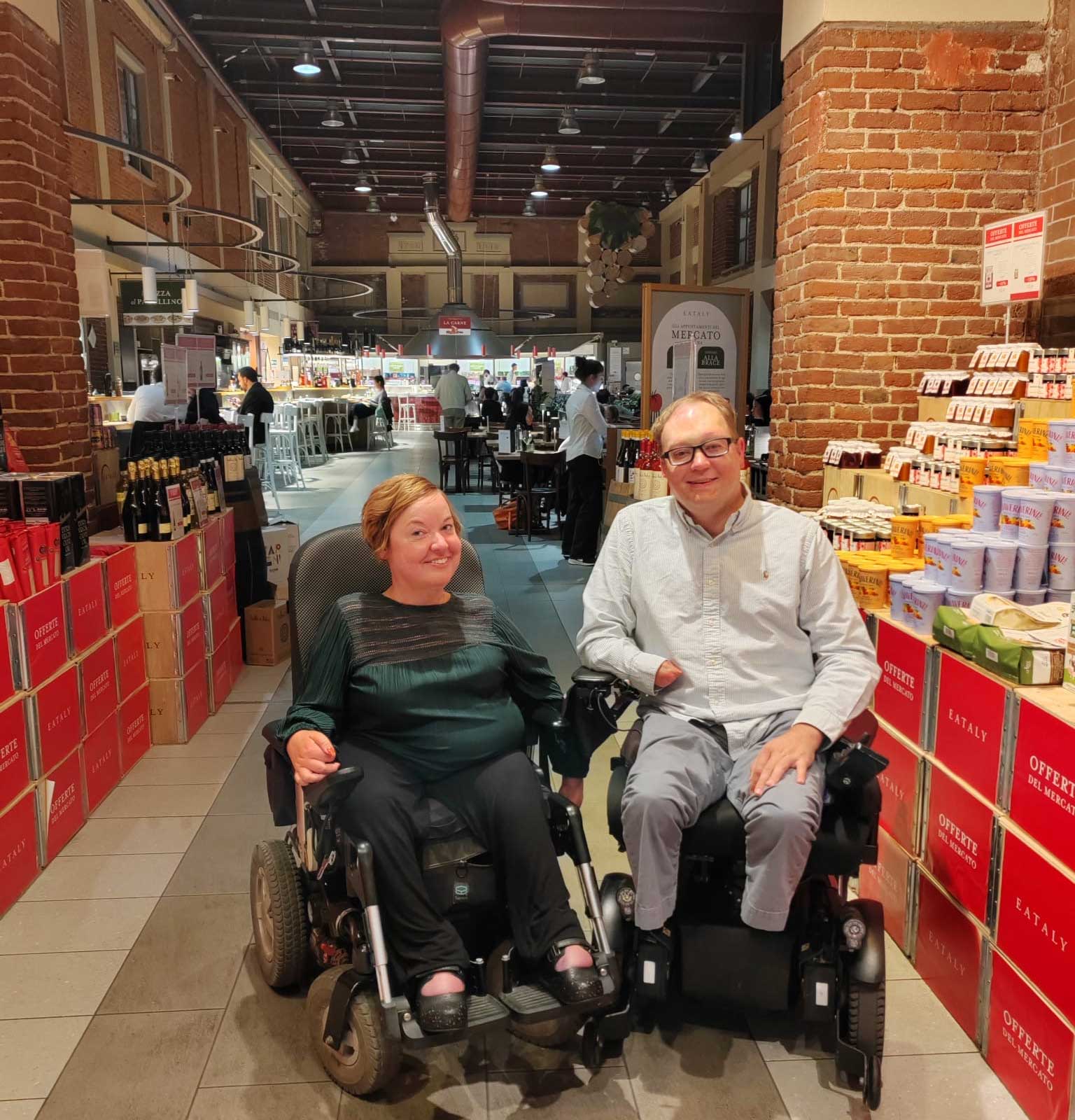

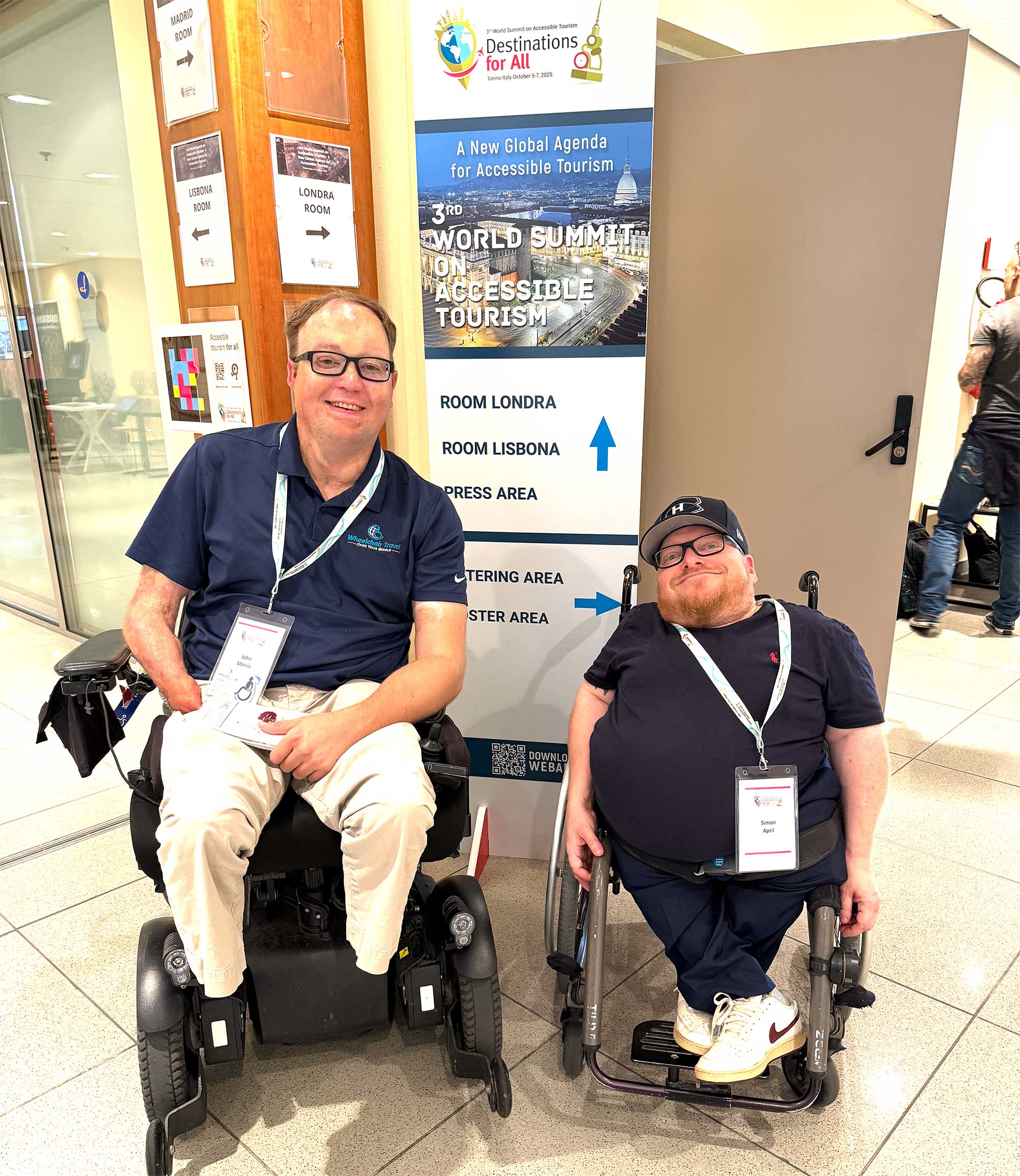
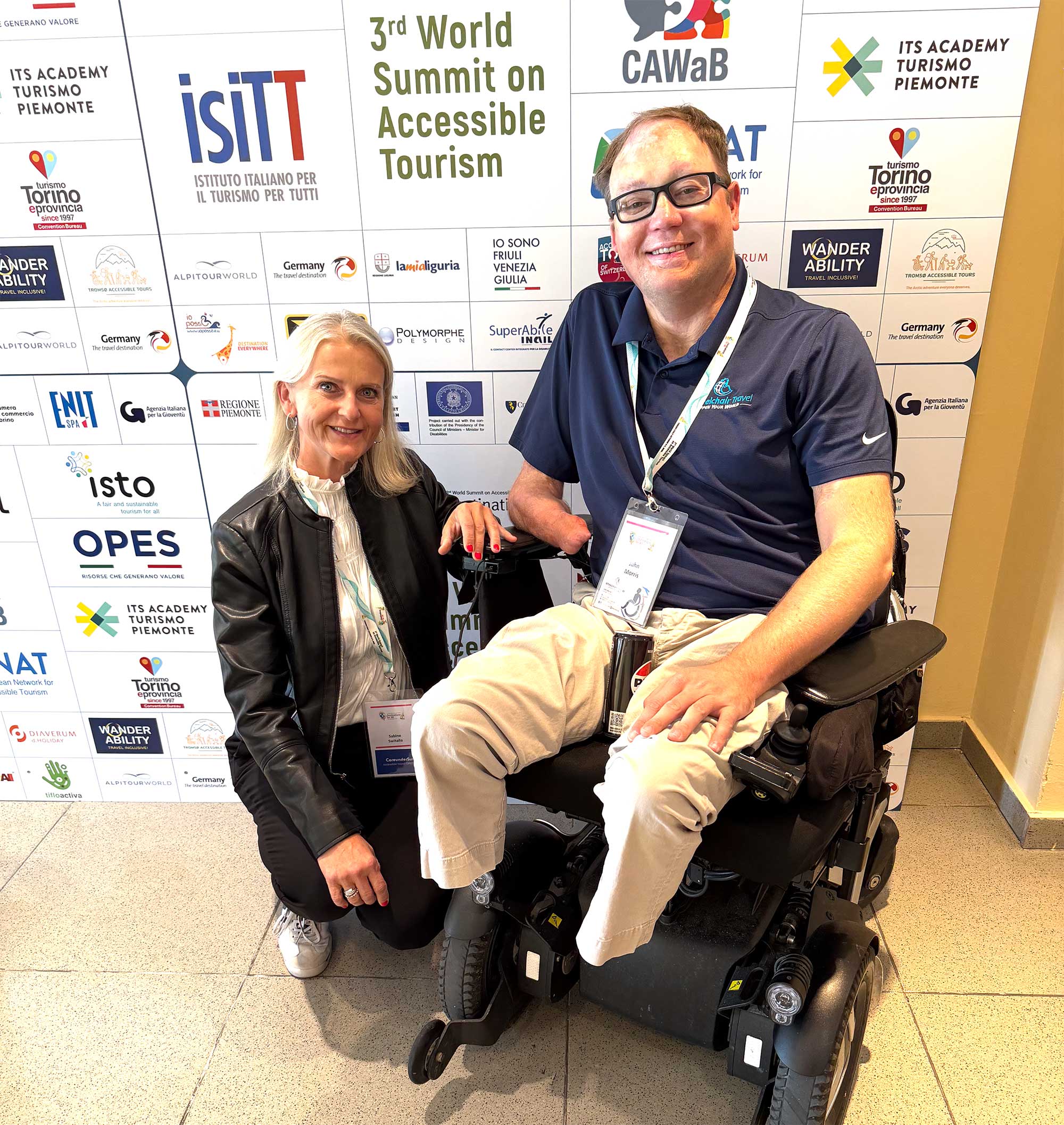
I connected with many colleagues, advocates for accessible travel and more than a few Wheelchair Travel readers at the conference, including my friends Ryan Smith from Freewheel Weekends and Sanna Kalmari of Palmuasema. That accessible travel has granted me friends from Australia, Finland and so many other countries around the world continues to amaze me to this day.
By the way, check out Ryan's 2020 guest post, which focuses heavily on his adventures through Egypt (it's fitting and worth a read!):
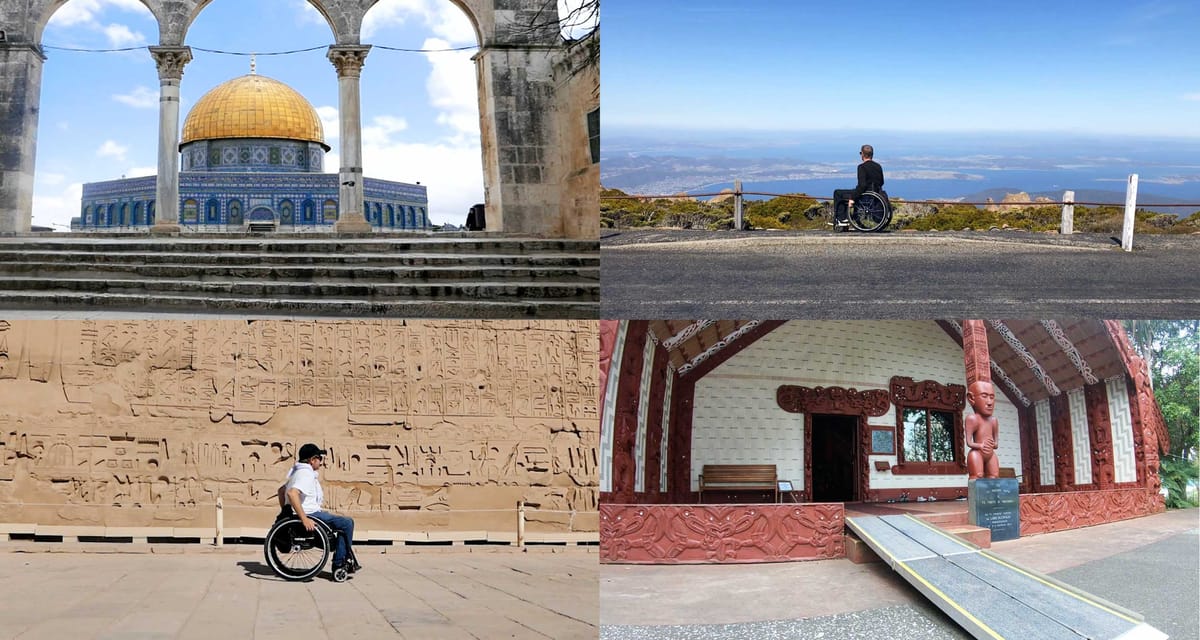
I was pleased to deliver two presentations at the WSAT. My first, entitled Wheelchair Travel for the Modern Age: Empowering Individuals, Families, and Communities, drew the largest crowd. I spoke alongside a powerhouse panel including Andrea Andorno, CEO of the Torino Airport; Giampiero Strisciuglio, CEO of Italian rail company Trenitalia; and Davide Drago from the Italian Civil Aviation Authority.
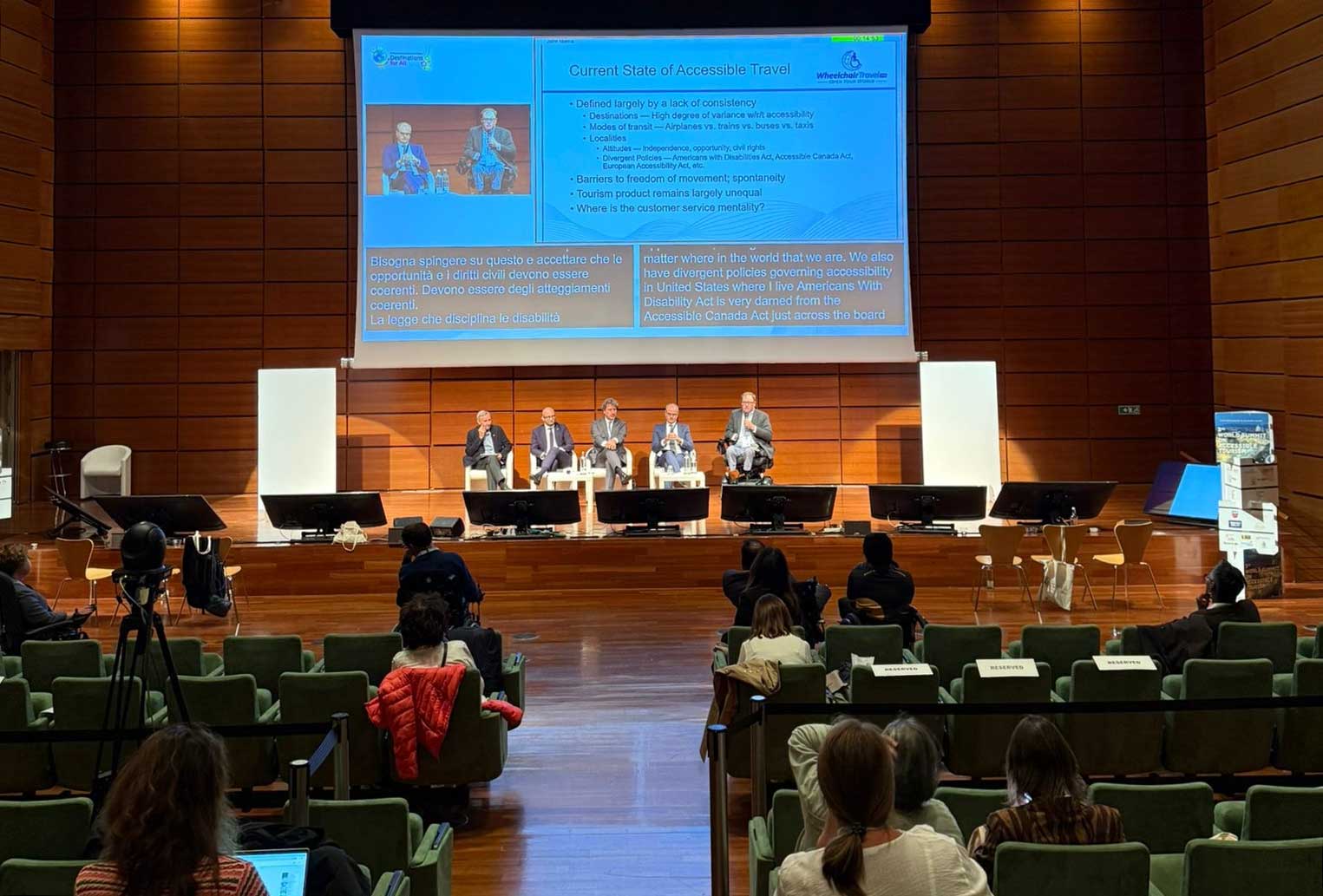
Although I had only a limited amount of time, I used every minute of it, and made key points that were the subject of continued discussion throughout the conference. The following images of my slide deck reveal key points (text is copied after each slide):
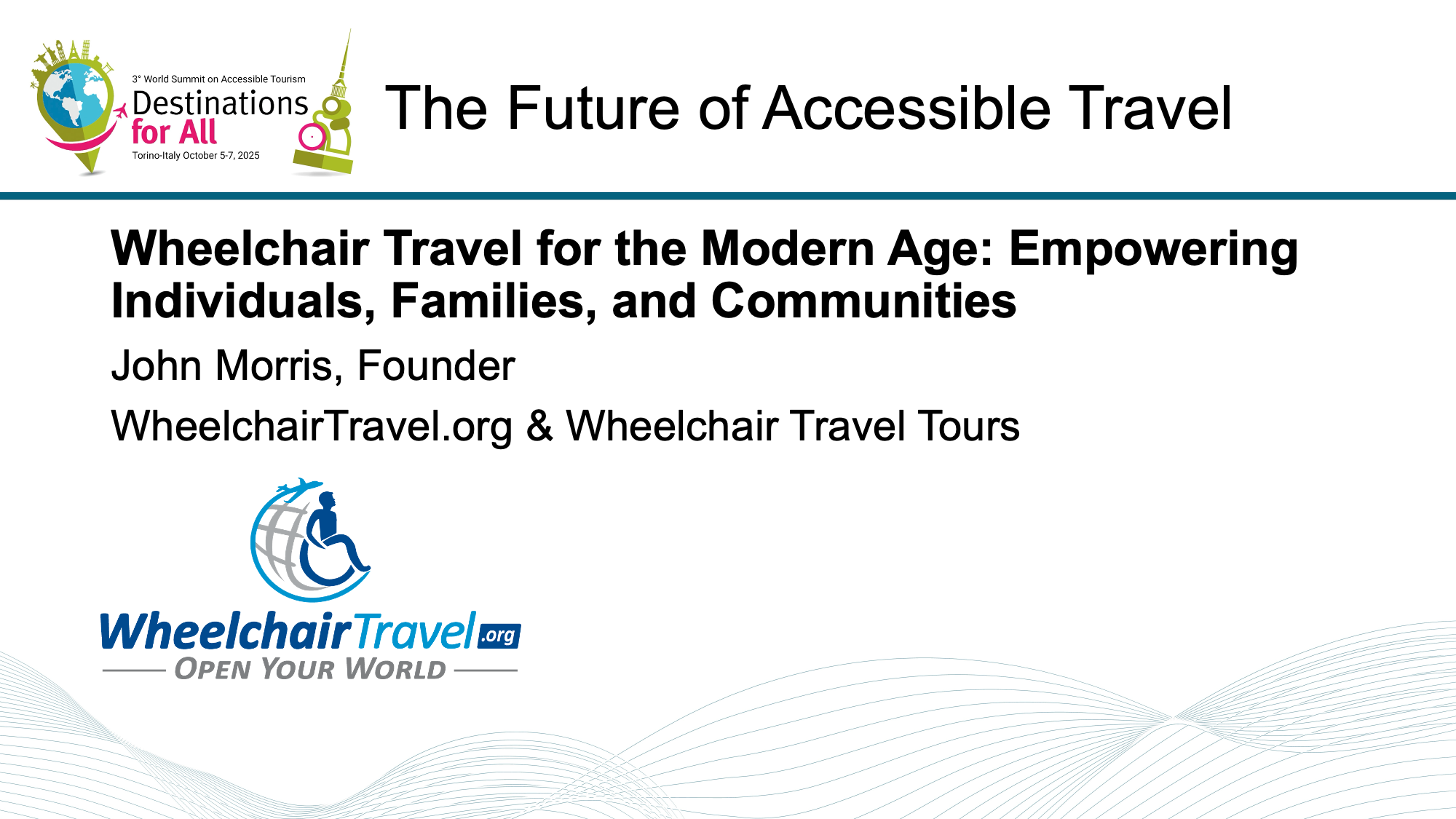
Title slide: Wheelchair Travel for the Modern Age: Empowering Individuals, Families, and Communities by John Morris, Founder, WheelchairTravel.org and Wheelchair Travel Tours.
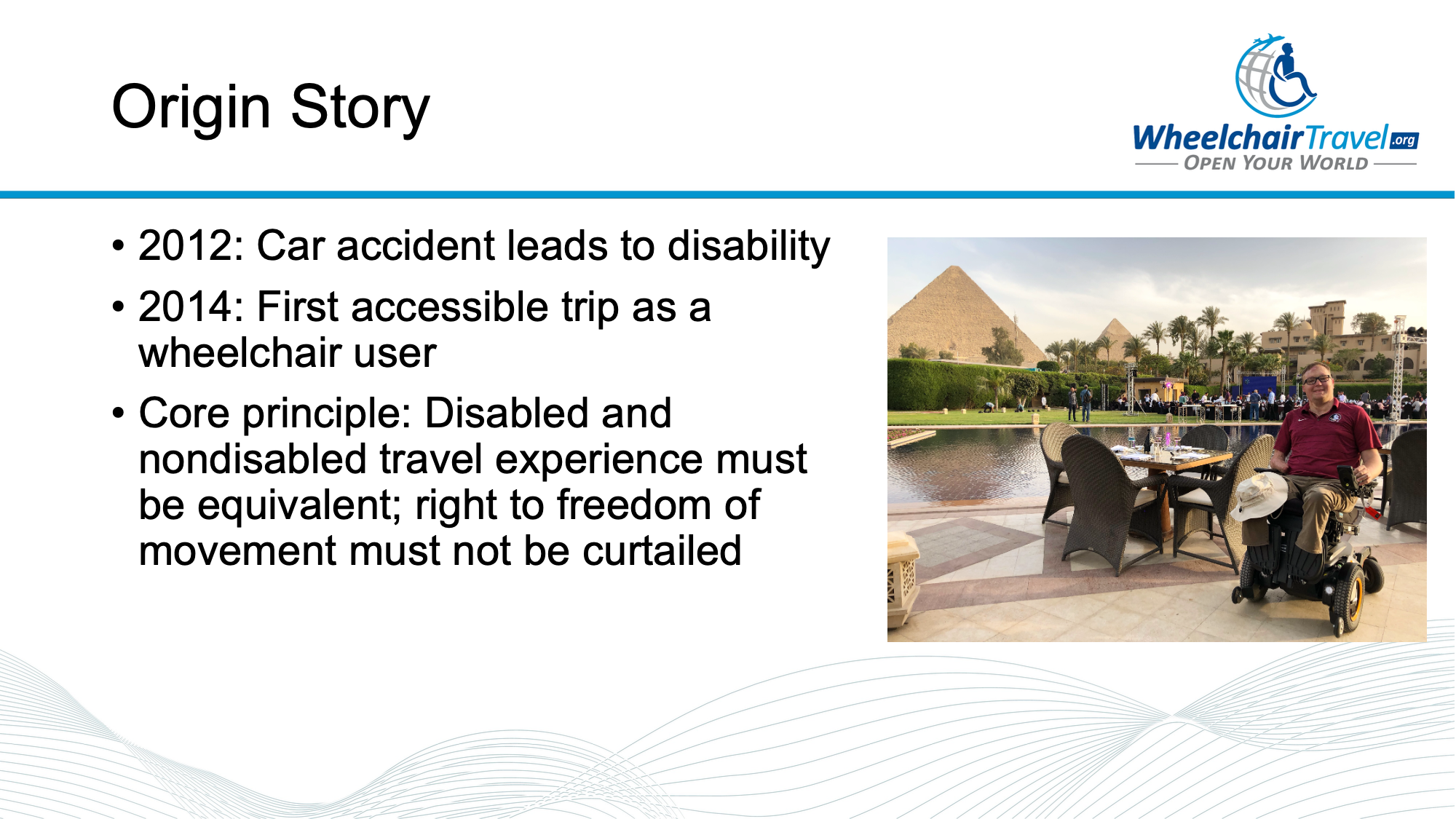
Origin Story
- 2012: Car accident leads to disability
- 2014: First accessible trip as a wheelchair user
- Core principle: Disabled and nondisabled travel experience must be equivalent; right to freedom of movement must not be curtailed
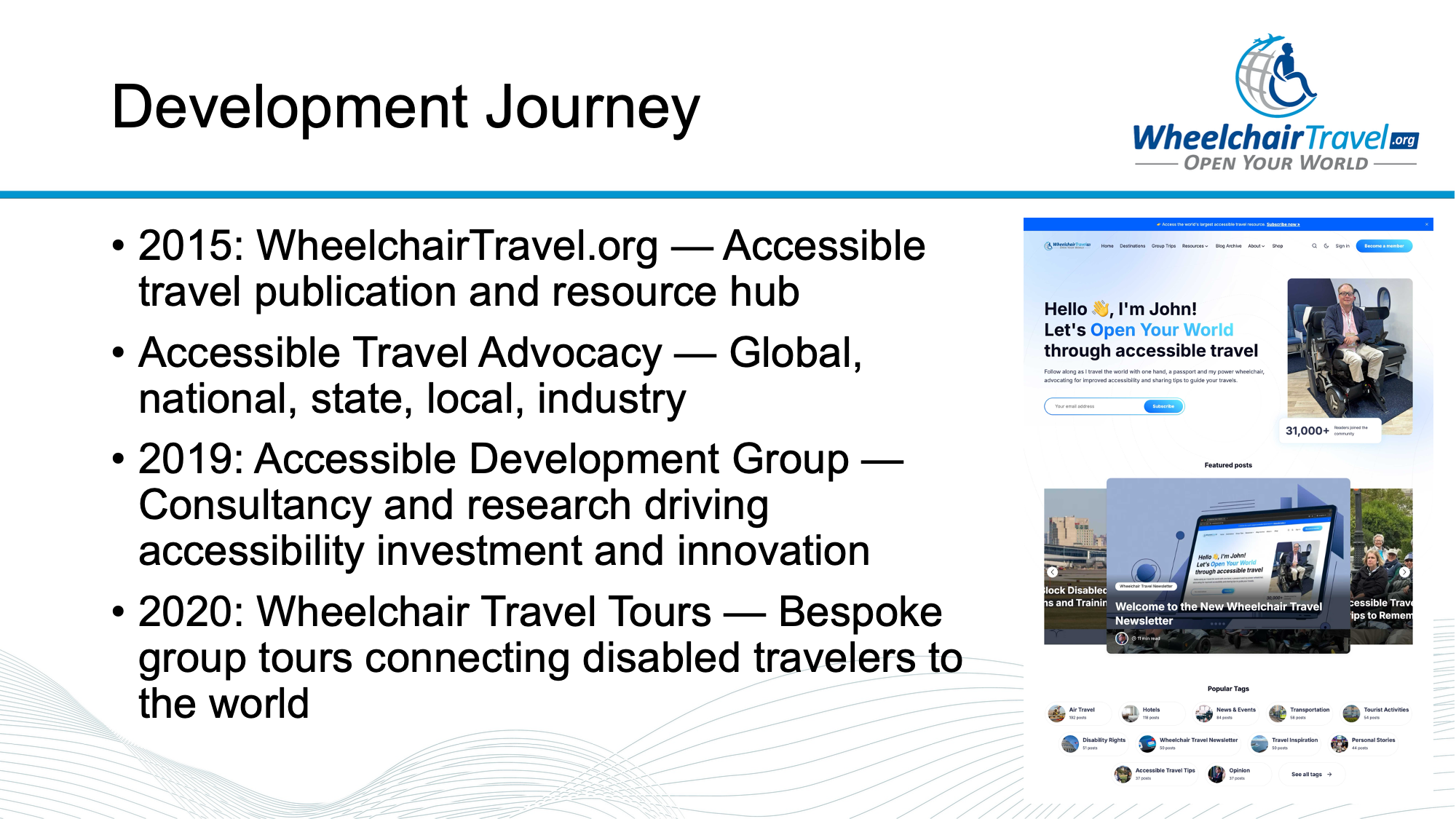
Development Journey
- 2015: WheelchairTravel.org — Accessible travel publication and resource hub
- Accessible Travel Advocacy — Global, national, state, local, industry
- 2019: Accessible Development Group — Consultancy and research driving accessibility investment and innovation
- 2020: Wheelchair Travel Tours — Bespoke group tours connecting disabled travelers to the world
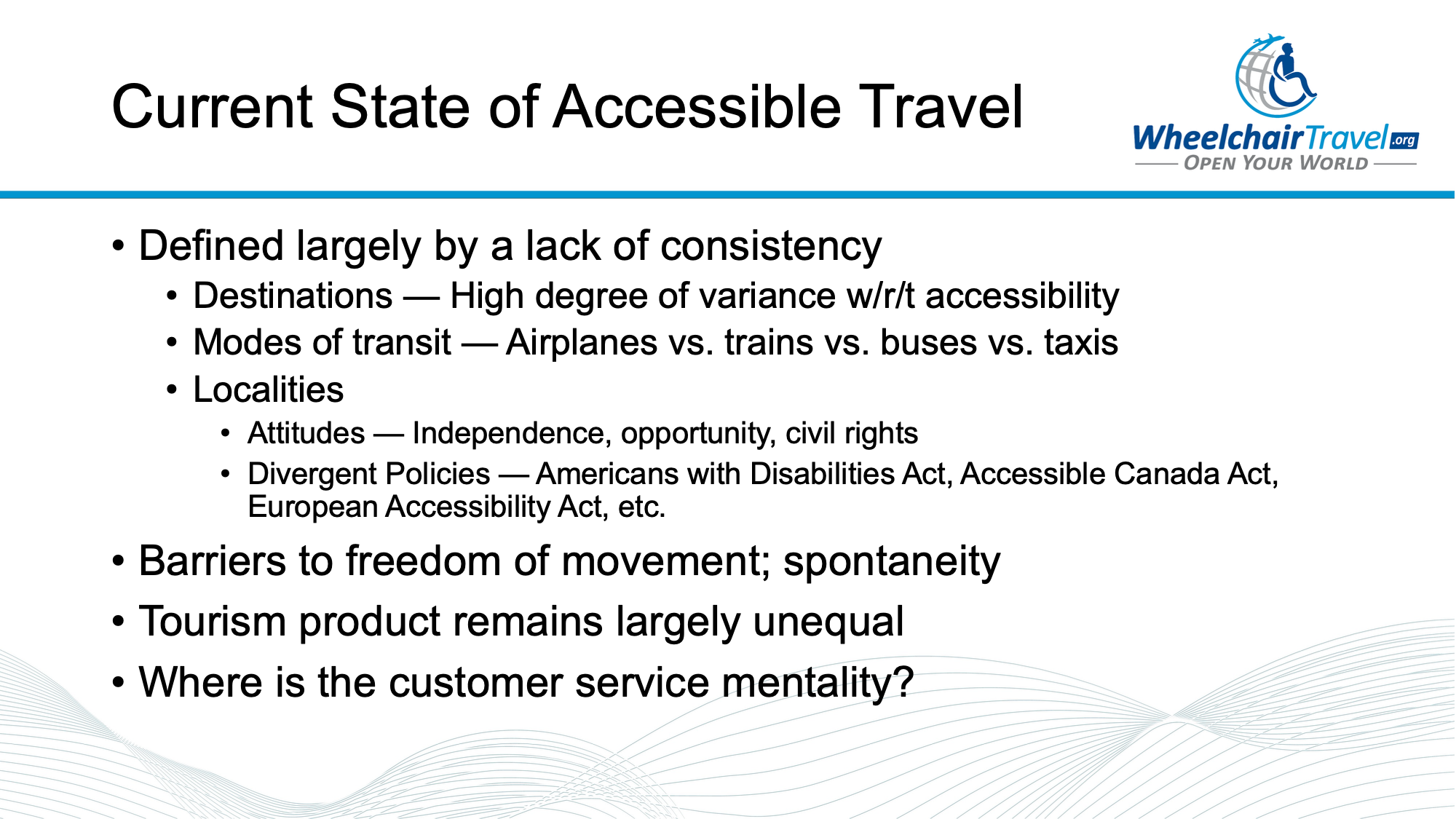
Current State of Accessible Travel
- Defined largely by a lack of consistency
- Destinations — High degree of variance w/r/t accessibility
- Modes of transit — Airplanes vs. trains vs. buses vs. taxis
- Localities
- Attitudes — Independence, opportunity, civil rights
- Divergent Policies — Americans with Disabilities Act, Accessible Canada Act, European Accessibility Act, etc.
- Barriers to freedom of movement; spontaneity
- Tourism product remains largely unequal
- Where is the customer service mentality?
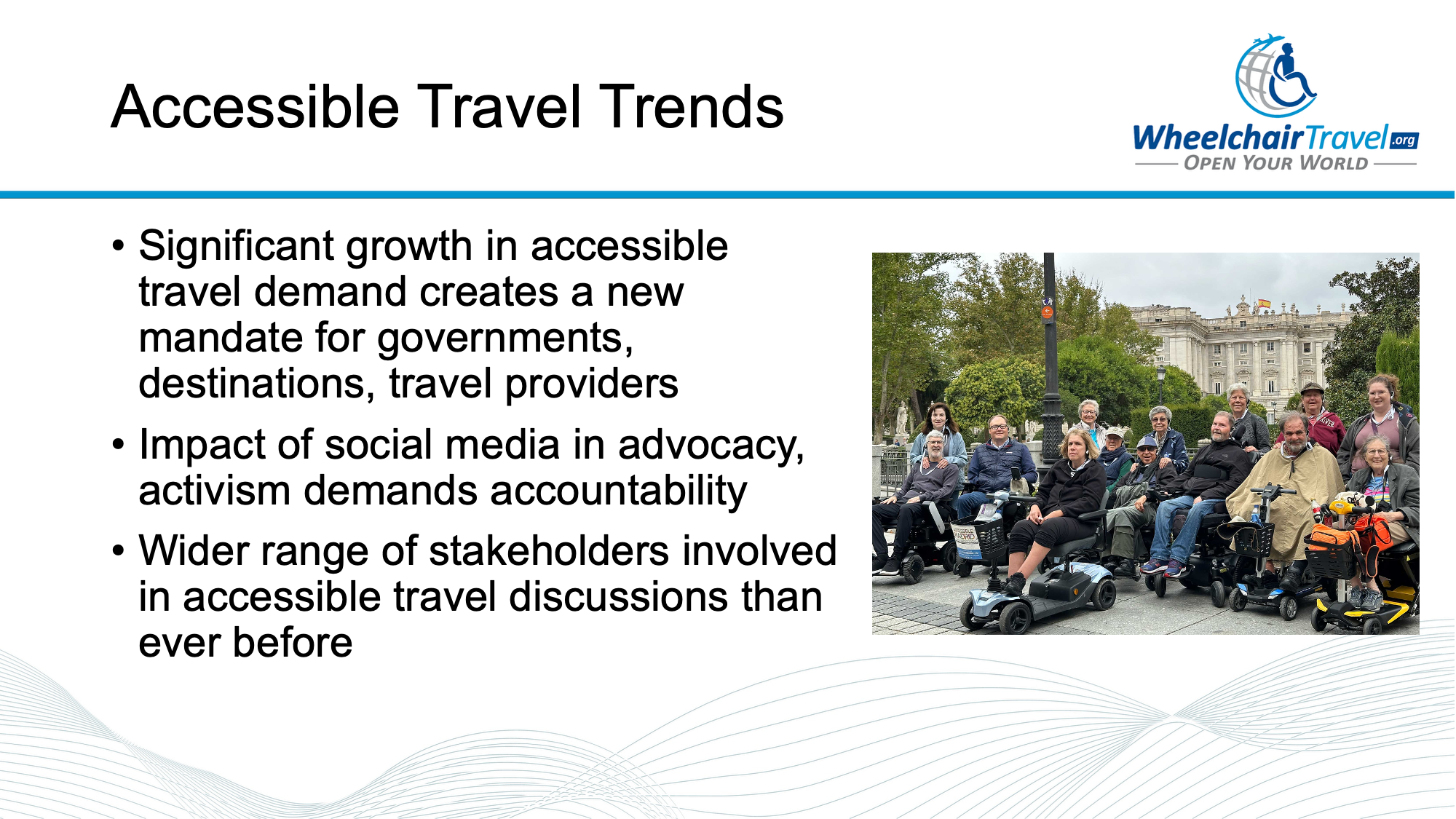
Accessible Travel Trends
- Significant growth in accessible travel demand creates a new mandate for governments, destinations, travel providers
- Impact of social media in advocacy, activism demands accountability
- Wider range of stakeholders involved in accessible travel discussions than ever before
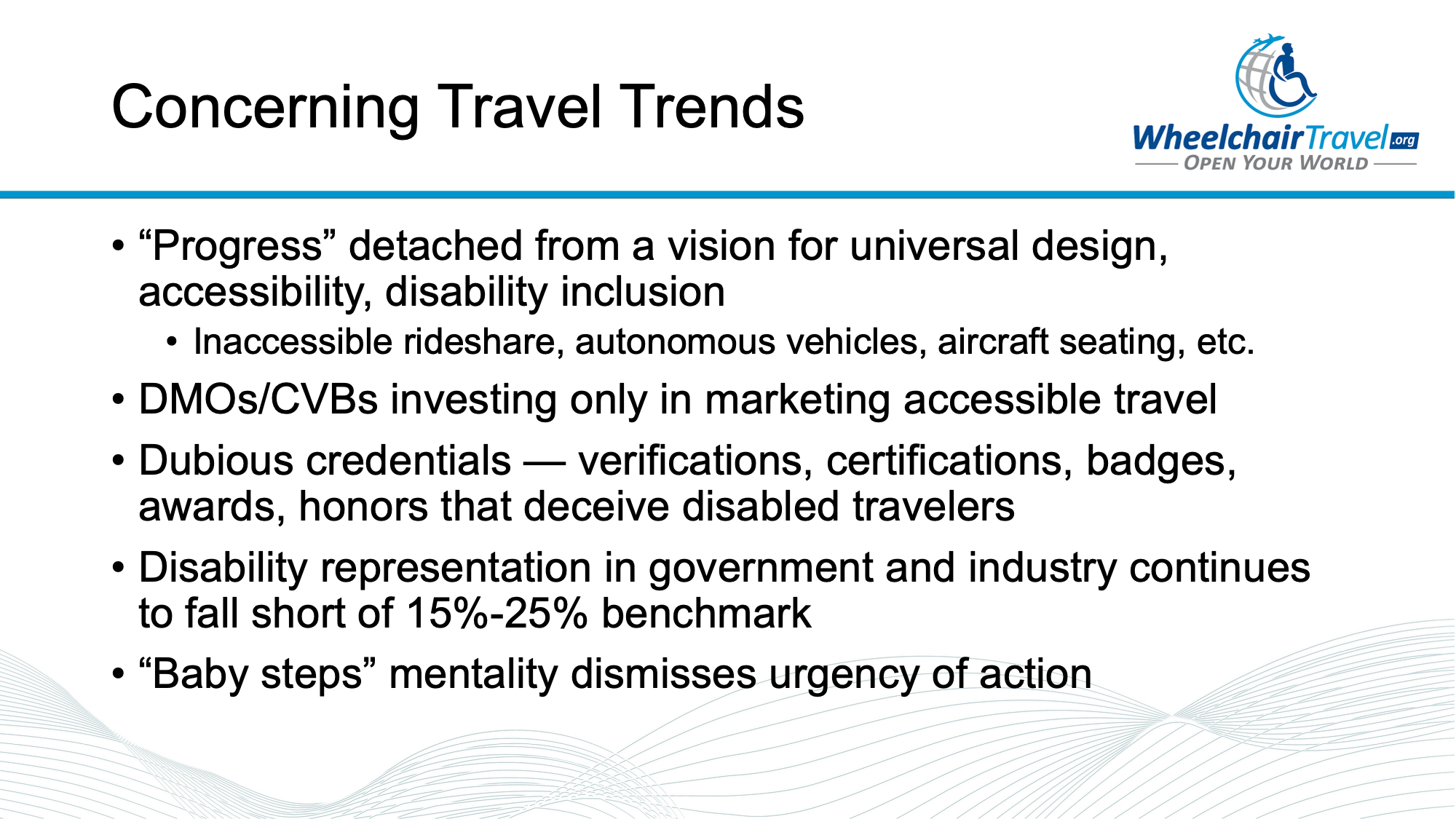
Concerning Travel Trends
- “Progress” detached from a vision for universal design, accessibility, disability inclusion
- Inaccessible rideshare, autonomous vehicles, aircraft seating, etc.
- DMOs/CVBs investing only in marketing accessible travel
- Dubious credentials — verifications, certifications, badges, awards, honors that deceive disabled travelers
- Disability representation in government and industry continues to fall short of 15%-25% benchmark
- “Baby steps” mentality dismisses urgency of action
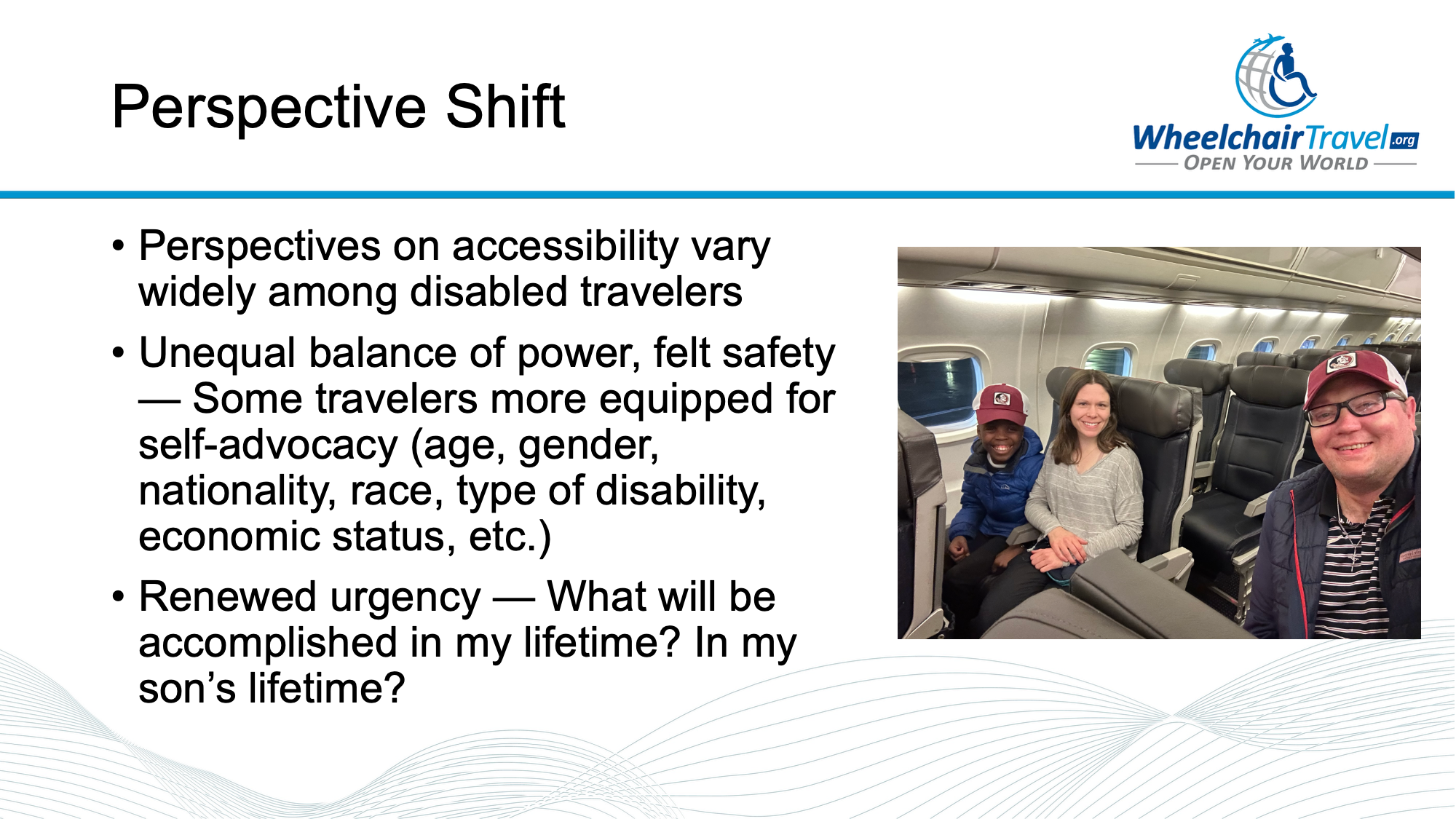
Perspective Shift
- Perspectives on accessibility vary widely among disabled travelers
- Unequal balance of power, felt safety — Some travelers more equipped for self-advocacy (age, gender, nationality, race, type of disability, economic status, etc.)
- Renewed urgency — What will be accomplished in my lifetime? In my son’s lifetime?
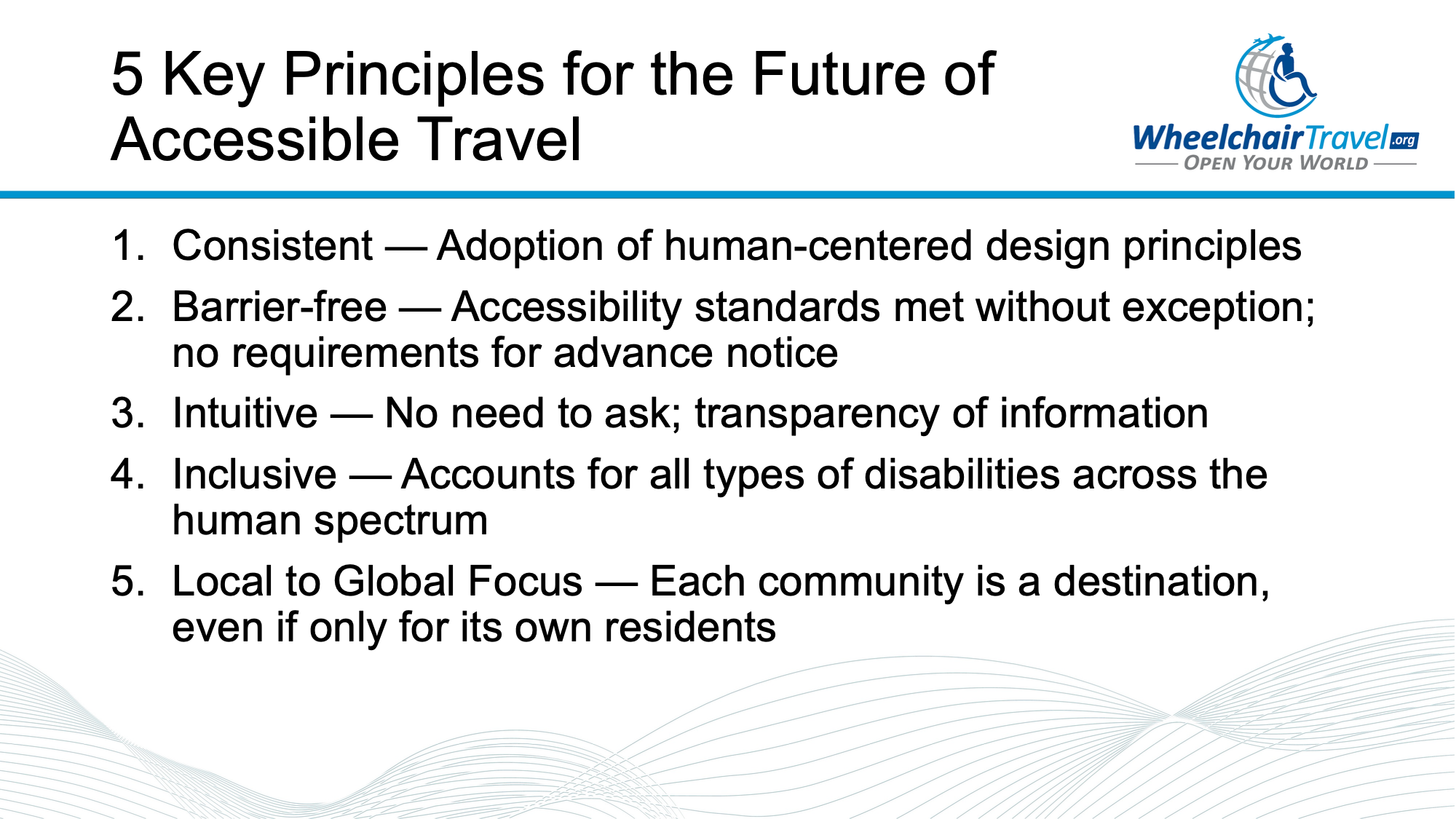
5 Key Principles for the Future of Accessible Travel
- Consistent — Adoption of human-centered design principles
- Barrier-free — Accessibility standards met without exception; no requirements for advance notice
- Intuitive — No need to ask; transparency of information
- Inclusive — Accounts for all types of disabilities across the human spectrum
- Local to Global Focus — Each community is a destination, even if only for its own residents
Without support from readers like you, I cannot travel to conferences like the World Summit on Accessible Tourism. Please consider supporting my efforts to make travel accessible for everyone by upgrading to a paid subscription today.
It was a pleasure to connect with fellow accessible travel professionals, advocates and a slew of Wheelchair Travel readers in Turin, and I eagerly await the next World Summit on Accessible Tourism!

